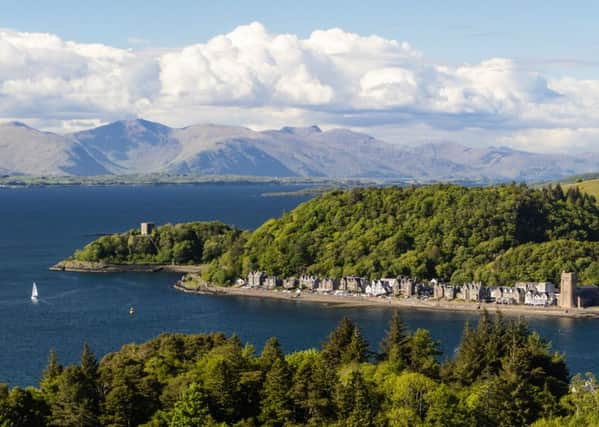Ancient woodland in Oban added to chain of ‘rainforest’ sites


Dunollie Wood is an 80-acre ancient woodland occupying two small hills on the northern edge of Oban. The wood is visible from the land and the sea and will be familiar to anyone who has ever taken a ferry in or out of the town.
The Woodland Trust Scotland has been gifted the land for a peppercorn rent from Dunollie Estate for 99 years from this week.
Advertisement
Hide AdAdvertisement
Hide AdDunollie will fit into a chain of Woodland Trust Scotland sites up and down the west coast showcasing Scotland’s so-called “rainforests” – lush native woods dependent on clean air and high rainfall.
They are Uig Wood on Skye, Loch Arkaig Pine Forest in Lochaber, Ben Shieldaig in Torridon (which the Trust hopes to complete purchase on soon) and Crinan Wood in Argyll.
Woodland Trust Scotland Director Carol Evans said: “We want to prioritise the conservation of such coastal native woods across the West coast using our own suite of five directly-managed sites as beacons of best practice.”
Dunollie is home to small areas of Atlantic oak wood, hazel wood and birch, which support a spectacular range of plants, ferns, mosses, lichens and flowers. Birdlife in the area includes sea eagle, golden eagle, great spotted woodpecker and summer migrants include cuckoo, redstart and tree pipit. Pine marten, red squirrel, brown hare, hedgehog, bats and the common toad are also in residence. Otter can be seen from time to time along the nearby sea shore.
The Trust says Scotland’s rainforest is a unique habitat of ancient and native woodlands, open glades, boulders, crags, ravines and river gorges which are garlanded with rare lichens, mosses, liverworts, fungi and other plants.
Scotland is the last stronghold of this globally important and rare habitat that once spread along the Atlantic coastline of Europe, but there are as little as 750,000 acres left. The remnant oak, birch, ash, native pine and hazel woodlands are small, fragmented and isolated from each other.
Ms Evans added: “Dunollie may be small but given its accessibility and prominence it makes an ideal gateway to tell the story of this scarce habitat and a useful link in our chain of five sites to showcase.”